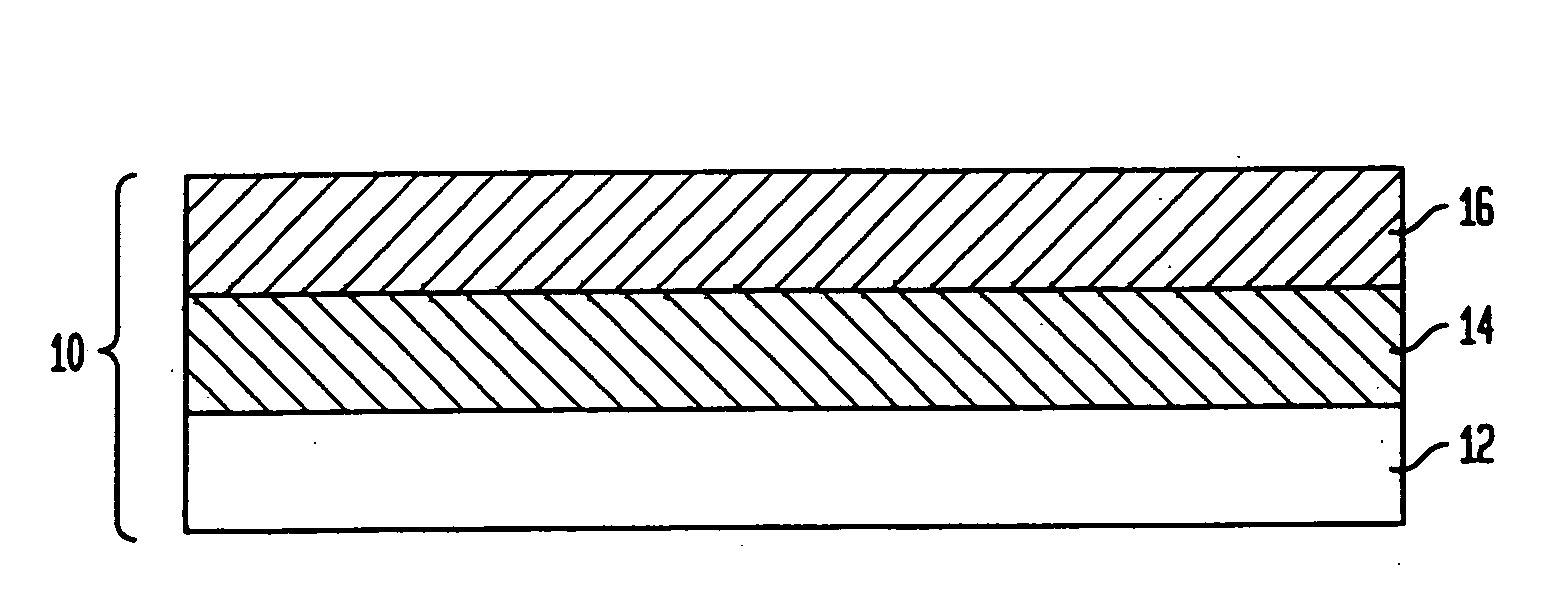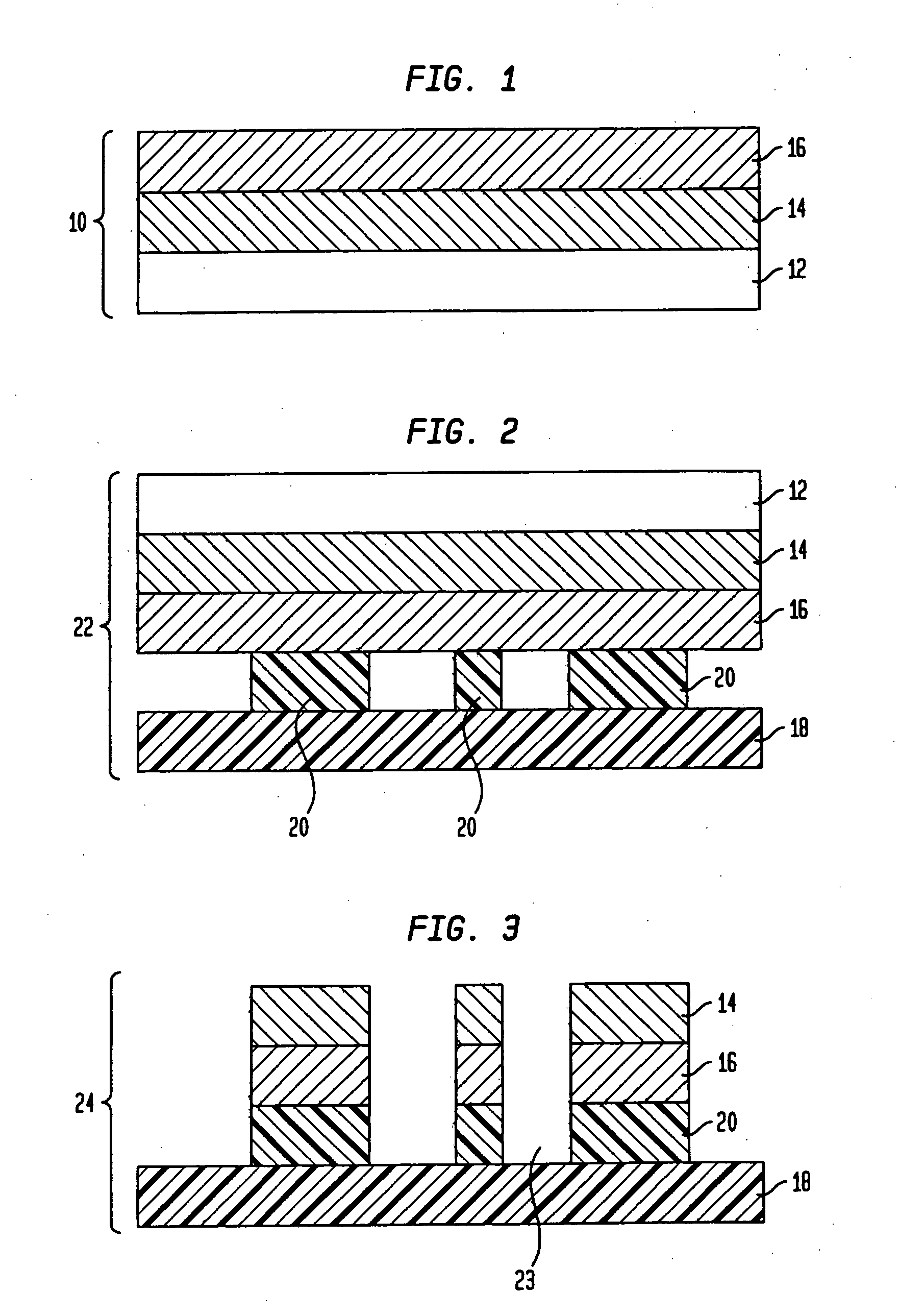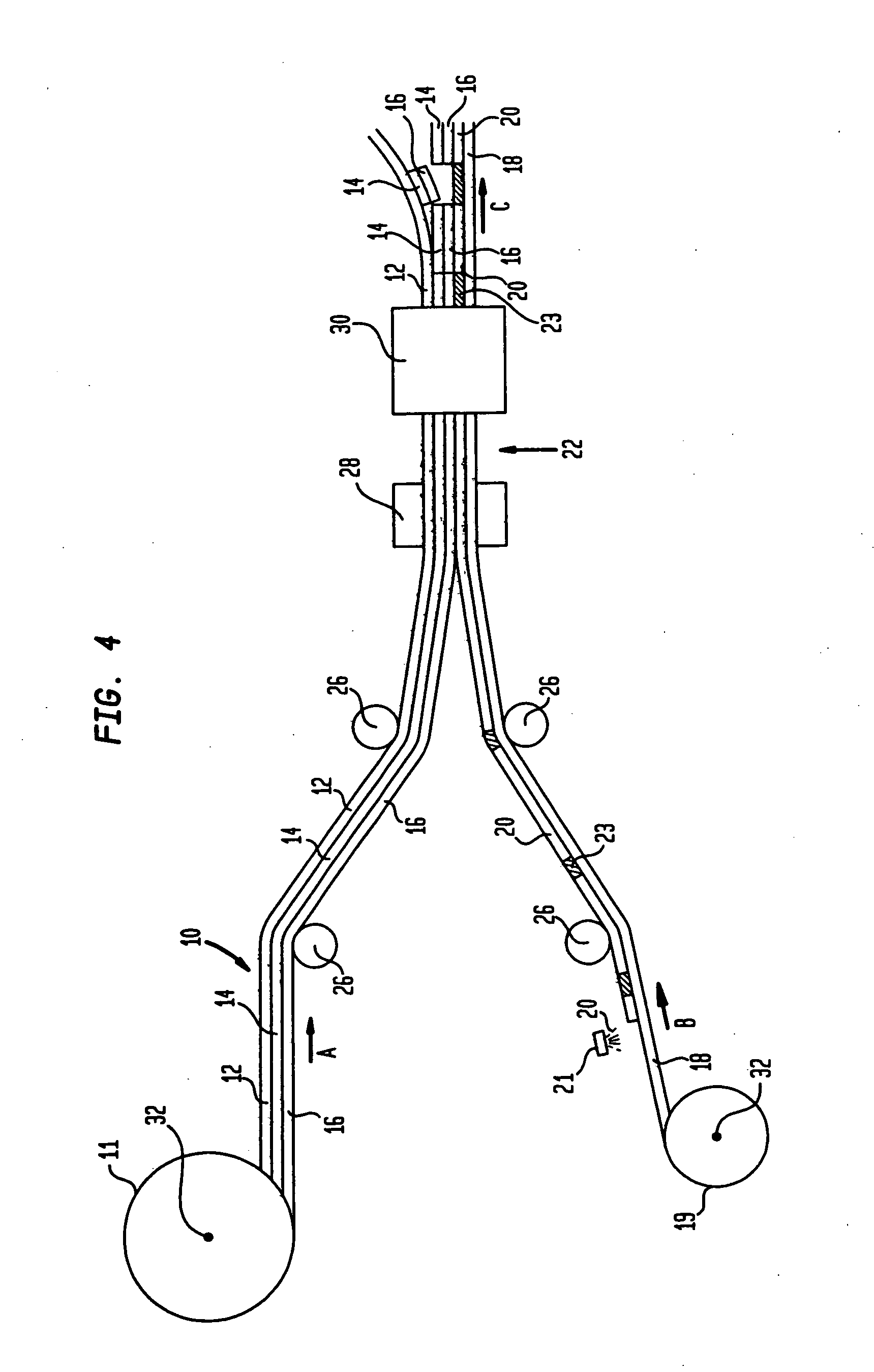Metallization process and product produced thereby
a technology of metallization process and product, which is applied in the direction of chemistry apparatus and processes, weaving, transportation and packaging, etc., can solve the problems of destroying heating process, limited applicability, and inability to use hot stamping on all substrates
- Summary
- Abstract
- Description
- Claims
- Application Information
AI Technical Summary
Benefits of technology
Problems solved by technology
Method used
Image
Examples
example
[0068]A metallized structure of the present invention, made according to a process, e.g., as illustrated in FIG. 2, is manufactured in the following manner. A 0.5 mil clear polyester transfer film is coated on one side by a gravure applicator using a 180 quad engraved cylinder, with aromatic urethane acrylate copolymer having a 70 / 30 weight ratio of urethane to acrylate components (Grancoat® 571) to a thickness of 3 microns. The breakaway coating is oven dried at 250° F. in a gas fired, hot air, low velocity oven. The dried coating layer has an elongation at break when tested in tension of 0.7%. The coated film is metallized on the coated side in a conventional vacuum metallizer to an optical density of 2.0 on the coated side of the film. The coated, metallized film is transported to an Intraroto® brand laminator equipped with an Energy Sciences Incorporated EZ Cure® brand electron beam (EB) unit. The coated film is laminated on the coated metallized side to a 6 mil white polystyren...
PUM
| Property | Measurement | Unit |
|---|---|---|
| distance | aaaaa | aaaaa |
| distance | aaaaa | aaaaa |
| elongation at break | aaaaa | aaaaa |
Abstract
Description
Claims
Application Information
 Login to View More
Login to View More - R&D
- Intellectual Property
- Life Sciences
- Materials
- Tech Scout
- Unparalleled Data Quality
- Higher Quality Content
- 60% Fewer Hallucinations
Browse by: Latest US Patents, China's latest patents, Technical Efficacy Thesaurus, Application Domain, Technology Topic, Popular Technical Reports.
© 2025 PatSnap. All rights reserved.Legal|Privacy policy|Modern Slavery Act Transparency Statement|Sitemap|About US| Contact US: help@patsnap.com



